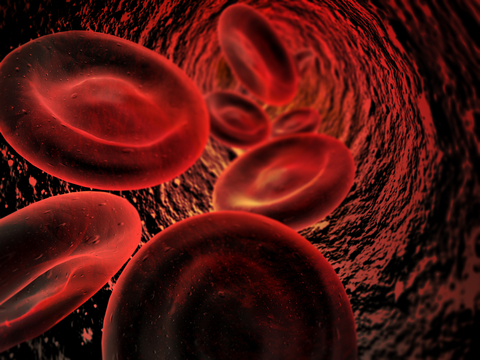
THROMBOPHILIA

DIVISION OF HEMATOLOGY

Scenario 4 |
||||||||||||||||||
Expert Opinion
|
Key points:
The question: Yes No Which of the following tests would you order in this patient? (please check all that apply)
None On a scale from -1 (less likely to screen) to +1 (more likely to screen), how does the following information affect your choice to screen?
Issues addressed: Thrombophilia testing in minors:This scenario is extremely complex as it involves testing for thrombophilias in an asymptomatic minor. VTE in childhood is extremely rare occurring in about 7 per 1,000,000 children in Canadian populations with highest incidence in newborns.1 In general, studies in children have highlighted the multifactorial pathogenesis of VTE requiring the presence of not only inherited thrombophilias but also several acquired risk factors such as placement of a central venous line or underlying medical condition before a VTE occurs.2 In a systematic review on the impact of thrombophilia on children, Young et al found at least one clinical risk factor was present at time of thrombosis in over 70% of patients.3 In a prospective cohort study of VTE in thrombophilic children, no VTE occurred in 81 children with an inherited defect after 5 years of follow-up despite high-risk events such as surgery or trauma. The authors concluded that thrombophilia testing in children from families with inherited defects was not justified.4 Similarly, a Canadian study did not find a significant contribution from inherited thrombophilias including FVL, prothrombin G20210A, protein C or S deficiency in patients under the age of 17. There was however, an increased frequency of such defects in older children with spontaneous VTE as compared to those precipitated by an underlying medical condition.5 While the patient is asymptomatic, there is no evidence to support alteration of management even if a thrombophilia is found, and it is reasonable to delay testing if not indefinitely until the patient reaches age of consent and can better understand the implications of such genetic labeling. back to issues Protein C deficiency:Protein C is a vitamin K-dependent protein synthesized by the liver. Once activated, it acts as an anticoagulant by cleaving factors Va and VIIIa. Activated protein C is also thought to have some anti-inflammatory effects outside of its role in haemostasis. Protein C deficiency is an autosomal dominant thrombophilia, which can be a result of either deficient amount (type I) or defective functioning (type II).6 Protein C deficiency may also be acquired as a result of liver disease, sepsis or malignancy.7,8 Protein C deficiency has been implicated in VTE, neonatal purpure fulminans, and warfarin-induced skin necrosis.9 Protein C deficiency increases the risk of lifetime VTE by 6.5 times compared to subjects without thrombophilias and has been found in approximately 1.4 to 8.6 percent of patients with VTE.10,11 It can occur in isolation or in combination with other genetic defects such as FVL. VTE may occur in the legs, mesenteric veins, cerebral vascular system, or elsewhere, with approximately 40% of patients having signs or symptoms implicating PE.12 Protein C deficiency does not usually manifest itself until after childhood with the majority of first VTE events occurring after the age of 20. Risk of recurrent VTE is high with an annual incidence of 6% in one study.13 The patient in this scenario would certainly be at risk for protein C deficiency. However, testing the patient during childhood would have little benefit over waiting till the patient reached the age of consent, and could better understand its implications. back to issues Inflammatory bowel disease (IBD):The link between IBD and VTE is an interesting one. IBD patients have an approximately 3-fold increase of VTE compared to the general population with VTE affecting between 1 and 7.7% of all patients.14,15 VTE is thought to be multifactorial as a result of inflammation, immobilization, use of corticosteroids, dehydration and other acquired risk factors. However, approximately 50% of the time, there is no identifiable risk factor. Thrombosis does not seem to strongly correlate with disease activity. While the majority of thromboembolic events occur during active IBD, up to one-third of all events have been documented during times of quiescence.16 At least one study found a significantly increased risk of VTE in patients with more extensive IBD.17 In this study, 76% of ulcerative colitis and 56% of crohn’s patients had extensive disease. A recent study looking at the impact of VTE on hospitalized IBD patients found an odds ratio of 1.85 and 1.48 for ulcerative colitis and crohn’s disease discharges respectively compared to non-IBD hospitalizations. Moreover there was a two-fold higher mortality from VTE for IBD than non-IBD patients.18 Study of thrombophilia in IBD patients has produced mixed results. The prevalence and implications of FVL and prothrombin G20210A seem to be similar to the general population.19,20 Studies on other thrombophilias are very rare with small sample sizes and contradictory results. 21 In general, there are no special recommendations for thrombophilia screening in IBD patients and consideration should again be made on an individual basis taking into consideration personal and family history with the knowledge that IBD patients are at inherently higher risk of VTE.22 back to issues 1. Monagle P et al. Outcome of pediatric thromboembolic disease: a report form the Canadian Childhood Thrombophilia Registry. Pediatr Res. 2000. 47:763-6. 3. Young G et al. Impact of inherited thrombophilia on venous thromboembolism in children. Circ. 2008. 118:1373-82. 4. Tormene D et al. The incidence of venous thromboembolism in thrombophilic children: a prospective cohort study. Blood. 2002. 100:2403-5. 5. Revel-Vilk S et al. Prothrombotic conditions in an unselected cohort of children with venous thromboembolic disease. J Thromb Haemost. 2003. 1:915-21. 6. Dahlback B. Advances in understanding pathogenic mechanisms of thrombophilic disorders. Blood. 2008. 112:19-27. 7. Shorr AF et al. Protein C concentrations in sever sepsis: an early directional change in plasma levels predicts outcome. Crit care. 2006. 10(3):R92. 8. Bick RL and H Kaplan. Syndromes of thrombosis and hypercoagulability. Congenital and acquired causes of thrombosis. Med clin north Am. 1998. 82(3):409-58. 10. Koster T et al. Protein C deficiency in a controlled series of unselected outpatients: an infrequent but clear risk factor for venous thrombosis (Leiden thrombophilia study). Blood. 1995. 85(10):2756-61. 11. Tran M and FA Spencer. Thromboepidemiology: identifying patients with heritable risk for thrombin-mediated thromboembolic events. Am heart J. 2005. 149:S9-18. 13. Brouwer JL et al. High longer-term absolute risk of recurrent venous thromboembolism in patients with hereditary deficiencies of protein S, protein C or Antithrombin. Thromb Haemost. 2009. 101(1):93-9. 14. Bernestein CN et al. The incidence of deep venous thrombosis and pulmonary embolism among patients with inflammatory bowel disease: a population-based cohort study. J Thromb Haemost. 2001. 85:430-4. 15. Jackson LM et al. Thrombosis in inflammatory bowel disease: clinical setting, procoagulant profile and factor V Leiden. QJM. 1997. 90:183-8. 16. Talbot RW et al. Vascular complications of inflammatory bowel disease. Mayo clin proc. 1986. 61:140-5. 17.Solem CA et al. Venous thromboembolism in inflammatory bowel disease. Am J Gastroenerol. 2004. 99:97-101. 18. Nguyen GC and J Sam. Rising prevalence of venous thromboembolism and its impact on mortality among hospitalized inflammatory bowel disease patients. Am J Gastroenterol. 2008. 103:2272-80. 19. Papa A et al. Inherited thrombophilia in inflammatory bowel disease. Am J Gastroenterol. 2003. 98:1247-51. 20.. Guedon C et al. Prothrombotic inherited abnormalities other than factor V Leiden mutation do not play a role in venous thrombosis in inflammatory bowel disease. Am J Gastroenterol. 2001. 96(5):1448-54. |
|||||||||||||||||
